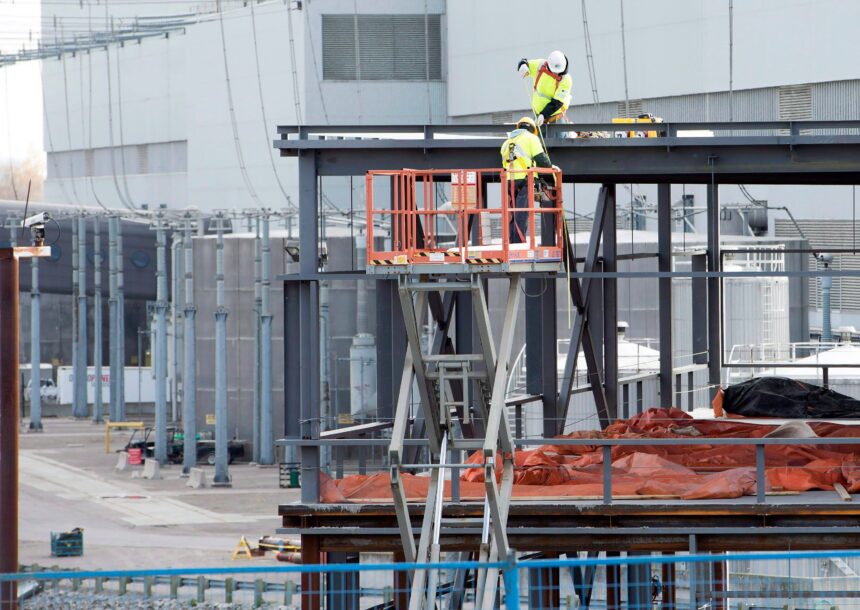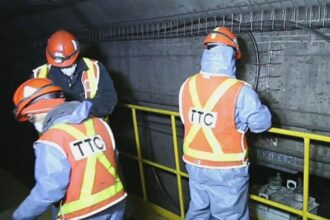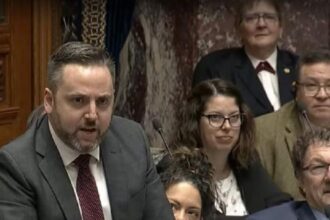In a stunning display of public mobilization, thousands of Ontario residents rallied across the province this weekend, voicing their opposition to Premier Doug Ford’s controversial $18 billion nuclear energy deal with American contractor Westinghouse. The demonstrations, which drew unprecedented crowds in Toronto, Ottawa, and Hamilton, mark a pivotal moment in what has become the most significant energy policy confrontation in recent provincial history.
“What we’re witnessing is not merely about energy preferences—it’s about democratic accountability,” said Dr. Eliza Thornton, environmental policy analyst at the University of Toronto, addressing protesters at Queen’s Park. “Ontarians are demanding transparency regarding how their money is being spent and why renewable alternatives weren’t given equal consideration.”
The Ford government’s nuclear expansion initiative, announced last month without prior public consultation, aims to extend the life of existing reactors while commissioning new facilities at the Darlington and Bruce Power sites. Administration officials have defended the plan as necessary for ensuring Ontario’s energy security, but critics point to significant cost overruns and delays that have plagued similar nuclear projects across North America.
Public opinion data released yesterday by EnviroPolls suggests the government may have miscalculated public sentiment. The survey found that 68% of Ontarians would prefer investment in renewable energy infrastructure, with only 23% supporting nuclear expansion as the primary focus for provincial energy development.
“This deal represents an outdated approach to energy planning,” noted Maria Gonzalez, director of the Ontario Clean Energy Coalition, in an exclusive interview with CO24 News. “While the government clings to centralized generation models, the rest of the world is embracing distributed renewable systems that offer greater resilience and faster deployment timeframes.”
The economic implications extend beyond energy production. Analysis from the Ontario Chamber of Commerce indicates that investment in renewable energy could generate approximately 32,000 jobs provincewide, compared to an estimated 8,500 from the nuclear expansion. This job creation potential has attracted unusual allies to the opposition movement, including several labor unions traditionally supportive of industrial development.
“Our members want jobs with a future,” stated James Rivera, representative for the United Industrial Workers at a Hamilton rally. “Renewable energy manufacturing represents sustainable employment that can’t be outsourced, while nuclear construction provides intense but temporary work followed by much smaller operational teams.”
The controversy has significant political dimensions as well. Opposition parties have seized upon the issue, with the provincial NDP and Green Party forming an unprecedented coalition to present an alternative energy strategy focused on wind, solar, and battery storage technologies. Their proposal, introduced in the legislature last week, claims to deliver similar capacity at approximately 60% of the nuclear expansion cost.
Even within Premier Ford’s own Progressive Conservative caucus, reports of dissent have emerged. Three PC MPPs from rural districts have privately expressed concerns about the deal’s financial structure, according to sources within the provincial parliament. The tensions highlight the complex regional dynamics at play, as rural communities increasingly view renewable energy as an economic development opportunity.
Energy economists have questioned the financial wisdom of massive nuclear investments at a time when renewable costs continue to plummet. “The economics simply don’t support this level of nuclear commitment,” explained Dr. Hiroshi Tanaka, energy systems researcher at McMaster University. “By the time these reactors come online, they’ll be competing against renewable systems with storage that deliver power at half the cost per kilowatt-hour.”
The Ford administration maintains that nuclear power provides reliability that renewables cannot match, particularly during Canadian winters. Energy Minister Caroline Patterson defended the decision at a press conference Tuesday: “We need baseload power that works rain or shine, day or night. Nuclear delivers that certainty.”
However, critics point to rapid advances in grid management technologies that have enabled jurisdictions like Denmark and parts of Germany to operate reliably with renewable penetration exceeding 80% during certain periods. These systems combine geographic distribution, diverse generation types, and advanced battery storage to maintain stability.
As the controversy intensifies, the fundamental question facing Ontario becomes increasingly clear: in a world of rapidly evolving energy technologies, should public resources be committed to massive, decades-long nuclear projects, or distributed across more flexible renewable systems that can be deployed incrementally? With provincial elections approaching next year, the answer may ultimately rest with voters rather than policymakers.
Will Ontarians embrace a nuclear-centered energy future, or demand a revised strategy that emphasizes renewable generation? The decision carries implications that will shape the province’s economic and environmental landscape for generations to come.

























